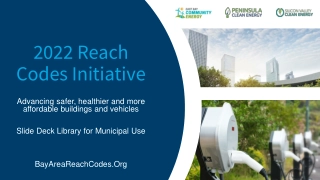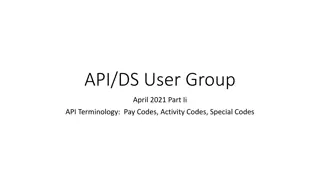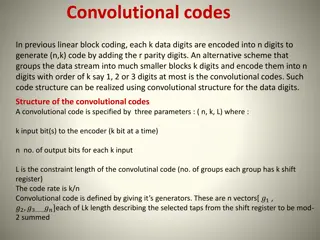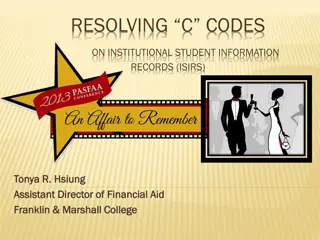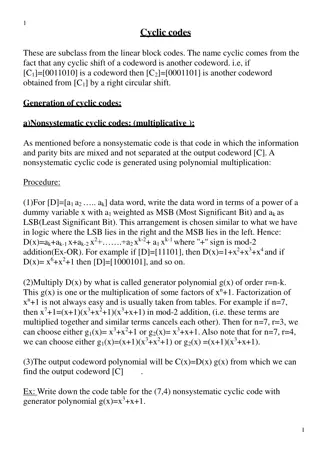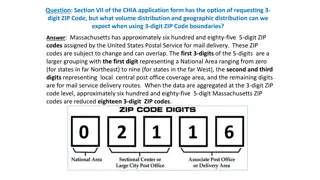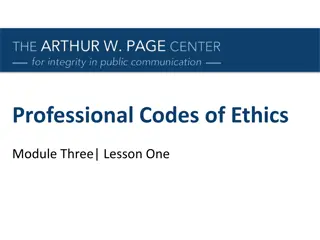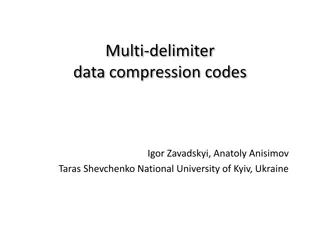Understanding CB Codes in Curriculum Development
Delve into the world of CB codes, where CB stands for course basic, used by CCCCO for counting and funding various elements in curriculum development. Discover the purpose and significance of different CB codes ranging from course control numbers to special status indicators. Gain insights into the evolution of codes and their roles in educational programs.
Download Presentation

Please find below an Image/Link to download the presentation.
The content on the website is provided AS IS for your information and personal use only. It may not be sold, licensed, or shared on other websites without obtaining consent from the author. Download presentation by click this link. If you encounter any issues during the download, it is possible that the publisher has removed the file from their server.
E N D
Presentation Transcript
CB Codes and Curriculum Kelly Locke Presented to Curriculum Committee August 30, 2019
What are CB codes? CB stands for course basic Used for CCCCO to count things (and fund things) Codes go from 00 to 26 CB 12, and 14-20 have been deleted CB 25 and CB 26 are new
What are the codes? CB 00 is course control number CB 01 is what we call the course designator and number CB 02 is the course title CB 03 is the TOP code More info coming! CB 04 is credit status (degree applicable or not or noncredit)
What are the Codes? CB 05 is transfer status (to UC and CSU, CSU only, or not transferable) CB 06 is maximum units CB 07 is minimum units CB 08 is basic skills status basic skills or not CB 09 is SAM code. It indicates the degree to which a course is occupational and assists in identifying sequences in occupational programs
What are the Codes? CB 10 is work experience status. Is this a cooperative work experience class or not? CB 11 is classification as credit or designates type of noncredit CB 12 repeatability CB 13 indicates special status for students with disabilities CB 14, 15 (CAN) HAS BEEN DELETED HAS BEEN DELETED
What are the Codes? CB 16, 17, 18, 19, 20 HAVE BEEN DELETED had to do with cross-listing CB 21 indicates how many levels below transfer a math or English or ESL course is. (More info later!) CB 22 is noncredit category (more detailed than CB 11)
What are the Codes? CB 23 indicates if the course was funded through EdNet funding for workforce development. CB 24 indicates whether a course is part of a program (degree or certificate) either as a required course or one of the restricted electives
Two New Codes CB 25 will identify GE requirement or local competency: CSU GE Breadth/IGETC B4/2A (math/QR) and A2, A3/1A (English Comp/Critical Thinking), local GE/competency CB26 will identify support course created for AB 705 compliance. This is a binary code: support course or not a support course
All Based in Curriculum Content determines TOP code (CB 03), basic skills or not (CB 08), how far below transfer (CB 21), where in the occupational sequence (SAM code CB 09), special status for students who are disabled (CB 13) Other codes are direct parts of outline course number (CB 01), title (CB 02), units (CB 06, 07), credit or noncredit (CB 11)
All should be proposed by faculty in the discipline and approved by the Curriculum Committee.
Implications Codes are used by CCCCO to identify things they want to count. Types of CTE courses Transfer level math/English courses (new funding formula) Units for apportionment Courses in a program vs stand alone courses Courses that DSPS students take where repeating is allowed
Implications Funding State funding Perkins funding Recognition Data collection and reporting e.g. Scorecard, Basic Skills Student Tracker For example
SAM Codes Student Accountability Model (SAM) codes help identify pathways within CTE programs introductory vs capstone Determine Perkins and Strong Workforce funding CTE Outcomes Survey and LaunchBoard.
SAM Codes Affect calculations about students who took intro courses and skills-builders (A) Apprenticeship (offered to apprentices only) (B) Advanced Occupational A B course is offered in one specific occupational area only and clearly labels its taker as a major in this area. The course may be a capstone course that is taken as the last requirement for a career technical education program.
SAM Codes (C) Clearly Occupational (but not advanced) Courses will generally be taken by students in the middle stages of their programs and should be of difficulty level sufficient to detract drop-ins. (D) Possibly Occupational Taken by students in the beginning stages of their occupational programs. Also used for service (or survey) courses for other occupational programs.
SAM codes (E) Non-Occupational These courses are non-occupational. How is this related to Perkins funding? Students successfully completing 12 units in Career Technical Education in a two-digit TOP of which one course was a Sam A-C is considered a concentrator. The number of concentrators is a key comparison in Perkins accountability reporting. The number of CTE concentrators who complete, persist, and leave are reported as ratios.
Our 2019-20 Goal To review and verify existing coding of all our courses (bulk action 802 active courses) Some codes will be easy to verify, others will require discussion with discipline faculty Similar to the placing courses in disciplines verification we started last year Establish system CC to assist faculty to correctly code courses as they come through Curriculum Committee



